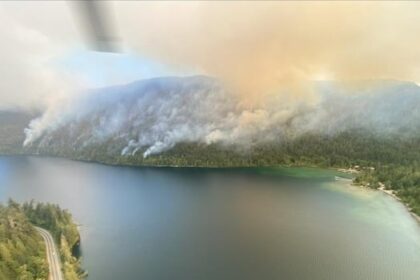SaskatoonThe winter of 2024-25 brought more snow than Saskatoon has seen in the last seven winters. More than once, snow clearing crews were unable to meet service level standards, says a new report to the transportation committee.2 massive snowfalls within same November week left plows struggling to keep upLori Coolican · CBC News · Posted: Sep 02, 2025 5:17 PM EDT | Last Updated: 5 hours agoAll city-maintained sidewalks and pathways in Saskatoon are supposed to be cleared within 48 hours of a snow event. That target wasn’t always met during the brutal winter of 2024-25. (Trevor Bothorel/Radio-Canada)Last winter was a tough one for Saskatoon drivers and snowplowers.A report received by city council’s transportation committee on Tuesday spelled it out in black and white: service levels were not met in several categories, especially in the early part of the season.The top-priority streets are supposed to be plowed or graded within 12 hours after a “snow event” — defined as an accumulation of more than five centimetres — but that didn’t happen after the city was hit with storms that dropped 17 centimetres and 25 centimetres just five days apart in mid-November, the report says.Priority 2 streets didn’t fare much better. They were supposed to be graded within 36 hours after a snow event.”This service level was not consistently met,” the report says.WATCH | Saskatoon crews hard at work after another major snowfall this past winter: Cleanup begins after big snowfall in SaskatoonPeople across the province are digging out after a winter blast hit much of Saskatchewan, dropping 12 centimetres of snow on Saskatoon and making highways difficult to traverse. Since then, city council has moved the goalposts, voting in May to extend the timeline for priority 2 streets to 48 hours, “to align with available resources and road network inventory.” If the extended timeline had been in place last winter, the target would have been met.Saskatoon recorded about 115 centimetres of snow between Nov. 19 and March 29, the most the city has seen in the past seven years and significantly more than the average amount recorded by Environment and Climate Change Canada from 1991 to 2020, which was 91 centimetres.The report says the city’s records show the average snowfall over the last seven winters was 98 centimetres.The city plans to review its entire snow response priority network in 2027, after the new Link transit system has been rolled out.The review “may result in some streets seeing an increase or decrease in their priority level, existing streets removed and/or new streets added to the Priority Street network,” the report says.Sidewalks and pathways are another area where the city’s efforts did not meet the standard after the first three snow events, it says.All city-maintained sidewalks and pathways are supposed to be cleared within 48 hours, but that didn’t happen, “primarily due to the significant amount of snowfall, as well as a nearly six percent increase in the pathway network from 2023 to 2024,” the report says.Last winter was also unusual, and expensive, when it came to non-priority streets in residential neighbourhoods. They had to be graded throughout the city on two occasions, once in December and again in February, to make them passable for vehicles.This type of work is usually done piecemeal as needed, rather than citywide, the report says. The city did reach its targets for priority 3 street grading, getting the job done within 72 hours after every snow event, and removing snow along streets with paid parking within 13 days after a snow event, the report says.City council is expected to discuss the cost of increasing the level of snow and ice management for local streets during its 2026-2027 budget talks later this year.The city overspent its 2024 snow and ice budget by $6.5 million as of Dec. 31. The shortfall was covered using surpluses from elsewhere in the overall budget without dipping into the snow and ice reserve fund, the committee heard. However, chief financial officer Clae Hack said a $3.5-million deficit is already projected for the 2025 snow and ice budget, due to further heavy snowfalls in the early months of this year.ABOUT THE AUTHORLori Coolican has been a reporter and editor in Western Canada since 1996.
Saskatoon missed the mark on last year’s snow response, report says










